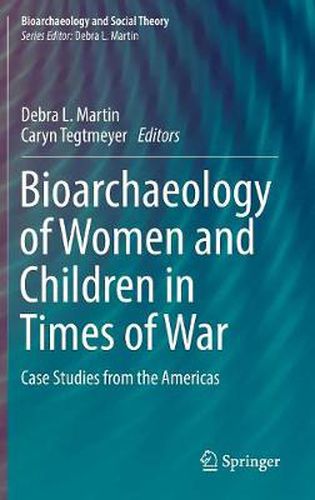Readings Newsletter
Become a Readings Member to make your shopping experience even easier.
Sign in or sign up for free!
You’re not far away from qualifying for FREE standard shipping within Australia
You’ve qualified for FREE standard shipping within Australia
The cart is loading…






This title is printed to order. This book may have been self-published. If so, we cannot guarantee the quality of the content. In the main most books will have gone through the editing process however some may not. We therefore suggest that you be aware of this before ordering this book. If in doubt check either the author or publisher’s details as we are unable to accept any returns unless they are faulty. Please contact us if you have any questions.
This volume will examine the varied roles that women and children play in period of warfare, which in most cases deviate from their perceived role as noncombatants. Using social theory about the nature of sex, gender and age in thinking about vulnerabilities to different groups during warfare, this collection of studies focuses on the broader impacts of war both during warfare but also long after the conflict is over.
The volume will show that during periods of violence and warfare, many suffer beyond those individuals directly involved in battle. From pre-Hispanic Peru to Ming dynasty Mongolia to the Civil War-era United States to the present, warfare has been and is a public health disaster, particularly for women and children. Individuals and populations suffer from displacement, sometimes permanently, due to loss of food and resources and an increased risk of contracting communicable diseases, which results from the poor conditions and tight spaces present in most refugee camps, ancient and modern.
Bioarchaeology can provide a more nuanced lens through which to examine the effects of warfare on life, morbidity, and mortality, bringing individuals not traditionally considered by studies of warfare and prolonged violence into focus. Inclusion of these groups in discussions of warfare can increase our understanding of not only the biological but also the social meaning and costs of warfare.
$9.00 standard shipping within Australia
FREE standard shipping within Australia for orders over $100.00
Express & International shipping calculated at checkout
This title is printed to order. This book may have been self-published. If so, we cannot guarantee the quality of the content. In the main most books will have gone through the editing process however some may not. We therefore suggest that you be aware of this before ordering this book. If in doubt check either the author or publisher’s details as we are unable to accept any returns unless they are faulty. Please contact us if you have any questions.
This volume will examine the varied roles that women and children play in period of warfare, which in most cases deviate from their perceived role as noncombatants. Using social theory about the nature of sex, gender and age in thinking about vulnerabilities to different groups during warfare, this collection of studies focuses on the broader impacts of war both during warfare but also long after the conflict is over.
The volume will show that during periods of violence and warfare, many suffer beyond those individuals directly involved in battle. From pre-Hispanic Peru to Ming dynasty Mongolia to the Civil War-era United States to the present, warfare has been and is a public health disaster, particularly for women and children. Individuals and populations suffer from displacement, sometimes permanently, due to loss of food and resources and an increased risk of contracting communicable diseases, which results from the poor conditions and tight spaces present in most refugee camps, ancient and modern.
Bioarchaeology can provide a more nuanced lens through which to examine the effects of warfare on life, morbidity, and mortality, bringing individuals not traditionally considered by studies of warfare and prolonged violence into focus. Inclusion of these groups in discussions of warfare can increase our understanding of not only the biological but also the social meaning and costs of warfare.